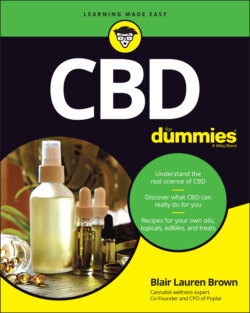Читать книгу CBD For Dummies - Blair Lauren Brown - Страница 18
Applying CBD to the skin
ОглавлениеTopical applications of CBD can treat both external and internal issues. The external treatments don’t absorb beyond the top three layers of the skin. These options — ranging from lotions, salves, creams, and balms to oils — are prevalent in both the skincare and the pain markets. The list of benefits here is particularly long. The primary targets are inflammatory skin conditions, including dry skin, itchy irritations, dehydration, and rough patches and cracks. CBD is also an antioxidant and thus is touted for protecting skin from the signs of aging as well as addressing more difficult skin conditions such as eczema, psoriasis, and acne.
Treating internal conditions topically is a little more complicated. The skin is the largest external organ; it serves as a protective barrier that either allows or prevents substances from reaching the bloodstream. Topicals designed to treat external (surface-level) skin conditions don’t need to penetrate below the outermost layer of the skin, but to take care of internal complaints, CBD must reach the bloodstream. That’s where transdermal agents come in.
Topical applications for internal benefits are known as transdermal agents (or transdermals). Transdermals require a penetrating agent — something that damages the skin in a microirritation. This microirritation allows the active agents to pass through the skin and into the bloodstream. Think of those pain relief patches that seem to change temperature. The “heat” is the penetrating agent (the cooling is there to mediate the heat sensation). The CBD market has only briefly approached transdermals, but a host of companies offer patches specifically for localized pain.
